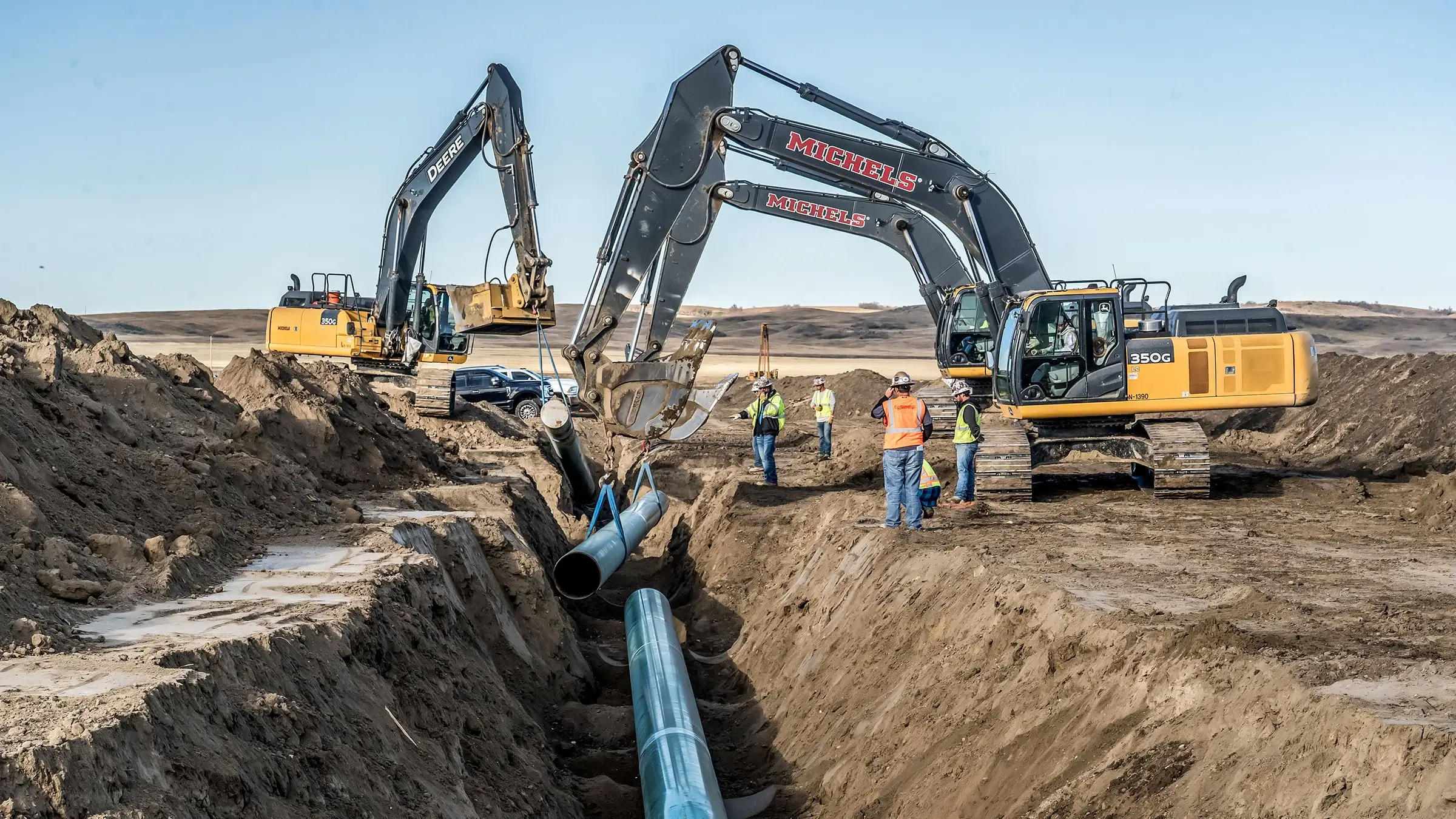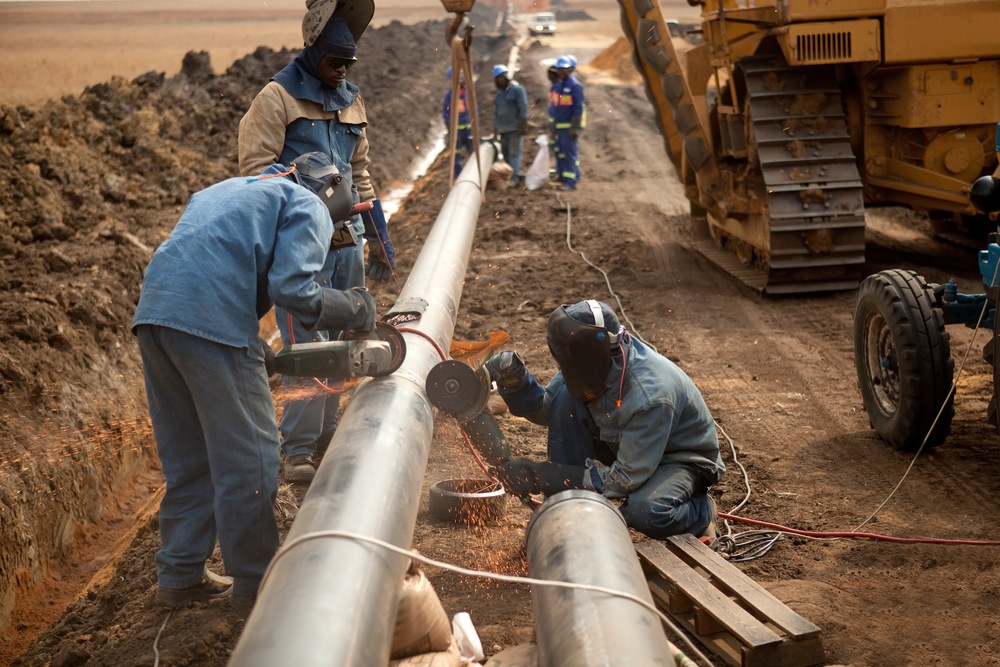Top Tools and Equipment for Professional Work With Creek Pipe Texas oilfield
A Deep Dive Into Pipes Installation: Crucial Aspects and Considerations for Effective Projects
Effective pipe installation is an important facet of design jobs. It entails an array of aspects, from product selection to accurate sizing and design. Each decision can especially affect the system's effectiveness and longevity. Recognizing these parts is important for staying clear of expensive errors. Creek Pipe contact. As groups browse with the intricacies of installation, a number of vital factors to consider emerge that warrant attention. What are the pivotal components that can make or damage a piping job?
Comprehending Pipe Materials and Their Applications
When selecting pipe products, one have to think about the certain applications and ecological conditions they will face. Different products provide distinctive homes that accommodate various needs. PVC is lightweight and immune to corrosion, making it perfect for water distribution systems. On the other hand, steel pipelines supply toughness and sturdiness, appropriate for high-pressure applications but might require protective coatings to stop rust.Copper pipelines are favored for plumbing as a result of their antimicrobial properties and ease of installation, while polyethylene is frequently utilized in below ground applications because of its flexibility and resistance to cracking.The option of material additionally depends upon temperature level extremes, chemical direct exposure, and installation place. For high-temperature applications, products like CPVC or PEX can be useful. Eventually, understanding the attributes and constraints of each product help in making educated decisions that improve system effectiveness and longevity.
Importance of Appropriate Sizing and Style
Appropriate sizing and layout of pipelines are vital for ensuring suitable circulation prices and lessening pressure loss. These factors additionally play a considerable duty in establishing the compatibility of materials utilized in the installation. An organized strategy to sizing and design can substantially improve the performance and long life of a piping system.
Impact on Circulation Prices
Circulation rates in piping systems are seriously affected by the sizing and layout of the pipes. Properly sized pipelines assure that the liquid can relocate effectively, decreasing turbulence and maximizing flow ability. Oversized pipelines can lead to decreased flow rates, while small pipelines may limit circulation, leading to enhanced friction and possible obstructions. The layout must additionally take into consideration variables such as pipe material, internal surface smoothness, and format, as these add to the overall efficiency of fluid transportation. In addition, the plan of fittings and connections within the system can impact flow rates. Subsequently, thorough attention to pipe sizing and layout is vital for enhancing circulation efficiency in any type of piping installation task.
Pressure Loss Considerations

Just how can push loss considerably influence the efficiency of a piping system? Stress loss is a crucial variable that can considerably lessen the efficiency of fluid transport systems. When pipelines are poorly sized or designed, excessive stress loss might take place, causing reduced circulation rates and raised energy intake. This inadequacy can cause higher operational costs and possible system failures. Appropriate sizing and style are necessary to reduce pressure loss, guaranteeing that liquid dynamics remain optimal throughout the system. Designers must meticulously consider variables such as pipe size, size, and product to attain an effective equilibrium. Ultimately, resolving pressure loss throughout the layout phase can boost dependability and durability, making it vital for successful piping tasks.
Material Compatibility Variables
Stress loss is not the only factor that can affect the efficiency of a piping system; product compatibility likewise plays a significant function in overall effectiveness. Guaranteeing that the products made use of in a piping system work with the liquids they will deliver is necessary. Various materials can react negatively to different chemicals, bring about rust, destruction, or contamination. This can eventually jeopardize the integrity of the system and impact its longevity. Additionally, appropriate sizing and layout are very important to fit thermal growth and tightening, which can better influence material performance. Examining elements such as temperature, stress, and chemical composition is crucial in choosing appropriate materials, therefore boosting system reliability and reducing maintenance expenses in the long term.
Techniques for Accurate Pipe Installation
Exact pipe installation is important for ensuring system effectiveness and long life. Numerous strategies can improve the accuracy of this process. Careful dimension is important; installers need to utilize high quality tools such as laser levels and tape actions to identify the precise lengths and angles called for. Next off, correct pipe reducing methods, like utilizing a pipe cutter rather than a hacksaw, assurance tidy sides that facilitate far better connections. In addition, the use of placement devices, such as pipe jigs, can significantly enhance precision throughout setting up. It is also suggested to consider thermal growth; permitting for sufficient spacing and expansion joints can protect against future misalignments. Lastly, the installation group need to adhere to maker standards to follow certain referrals associated with each pipe kind. By applying these methods, the probability of leaks and system failures decreases, ultimately adding to a much more reputable piping system.
Guaranteeing Pipe Positioning and Assistance
Appropriate positioning and assistance are essential to the integrity and efficiency of any type of piping system. Imbalance can result in increased anxiety on joints, potential leakages, and minimized efficiency. To guarantee proper positioning, it is vital to make use of proper tools such as laser levels and alignment determines. These tools help attain precise positioning, guaranteeing that pipes are installed based on style specifications.Support systems have to be created to fit thermal development and contraction, as well as the weight of the pipes and their materials. Selecting the right kind of assistances, hangers, and braces is crucial. Each need to be installed at defined intervals to stop sagging or unnecessary stress and anxiety on the pipelines. Normal evaluations following installation can help identify any kind of misalignments or signs of inadequate support. By prioritizing alignment and support, one can considerably enhance the sturdiness and performance of the piping system.
Typical Installation Blunders to Prevent

Testing and Evaluation for Top Quality Guarantee
The installation process may appear total, complete screening and evaluation are vital to making certain the lasting integrity of a piping system. Different techniques are used to evaluate the stability of the installation, consisting of stress tests, visual evaluations, and non-destructive testing (NDT) methods. Stress examinations confirm that the system can hold up against operational conditions without leakages, while aesthetic inspections aid determine any kind of visible problems in the pipes or joints. NDT approaches, such as ultrasonic or radiographic testing, provide insights right into the material integrity without compromising the system.Additionally, recording the testing results is essential for future reference and compliance with market requirements. This documents serves not only as a top quality guarantee measure however additionally as a legal protect. Inevitably, a detailed testing and evaluation protocol adds to the general safety and performance of the piping system, ensuring it satisfies the needed performance standards with time.
Upkeep Tips for Long-lasting Pipe Equipments
Keeping a pipeline system needs normal examinations and keeping track of to identify possible problems prior to they escalate. Applying effective cleaning techniques is also crucial for stopping build-up that can weblink hinder efficiency. With each other, these practices add to the durability and integrity of the piping framework.
Normal Examinations and Surveillance
Normal evaluations and surveillance are essential for making certain the long life and effectiveness of pipe systems. Regular evaluations can aid recognize potential problems such as leaks, corrosion, or clogs prior to they intensify into significant troubles. Applying a routine for regular evaluations permits the early discovery of deterioration, enabling prompt repair work. Tracking stress levels and flow rates can additionally supply useful insights into system efficiency, making sure that any kind of anomalies are resolved without delay. In addition, using sophisticated innovations, such as infrared video cameras or ultrasonic screening, can improve the assessment procedure by providing detailed information concerning pipe conditions. Eventually, constant tracking and examinations add to the dependability and durability of pipe systems, minimizing the risk of expensive fixings and downtime.

Efficient Cleansing Strategies
Effective cleaning techniques are important for preserving the stability and functionality of pipe systems. Consistently scheduled maintenance, such as flushing systems with water, helps eliminate particles and accumulation. For more persistent obstructions, specialists commonly advise hydro jetting, which uses high-pressure water to clean pipe insides thoroughly. Chemical cleaners can also be made use of yet must be chosen meticulously to prevent damaging pipelines. Furthermore, utilizing devices like pipe cameras can help in identifying trouble areas and making sure reliable cleaning. Maintaining correct drain and staying clear of the disposal of unsafe compounds down pipelines further contribute to long life. Generally, consistent cleaning practices not only improve efficiency however additionally lower the threat of costly repair work in the future.
Often Asked Questions
What Are the Labor Costs Linked With Pipe Installation Projects?
Labor costs for pipe installation tasks differ commonly, affected by factors like project complexity, regional wage prices, and called for skills (Creek Pipe near me). Normally, these expenses can vary from $50 to $100 per hour, relying on the labor force involved
How Do Local Rules Affect Pipe Installation Practices?
Regional guidelines greatly influence pipe installation practices by developing safety and security criteria, product requirements, and installation methods. Compliance with these regulations guarantees project security, environmental management, construction equipment hauling and adherence to local codes, ultimately affecting overall job success and costs.
What Devices Are Crucial for Pipe Installation?
Important devices for pipe installation include monkey wrench, cutters, and fittings. In addition, sealers, measuring tapes, and degrees guarantee accuracy and toughness. Appropriate equipment promotes performance and adherence to safety and security criteria during the installation procedure.
Just How Can Weather Condition Conditions Impact the Installation Refine?
Weather condition problems considerably influence the installation procedure, as extreme temperature levels, rain, or wind can influence product honesty, worker safety, and task timelines. Correct preparation and scheduling are vital to alleviate these prospective obstacles throughout installation.
Are There Service Warranties for Mounted Pipe Solutions?
Warranties for mounted pipe systems commonly differ by manufacturer and installation professional. Usually, they cover issues and craftsmanship for a specified period, making sure the system's dependability and offering comfort to the homeowner.